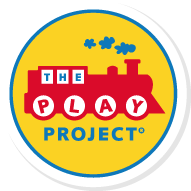Ashley Case, OTR/L
Halloween is something that most kids look forward to. It is a time for costumes and candy, role playing and pretend. . . and more candy! Consequently, it can also be a time for sensory overload. In an effort to help parents reduce their child’s stress and ensure fun during Halloween, we have compiled a list of general tips.

Be flexible. Worried about a last minute melt-down? Have some alternate trick-or-treating plans such as going to the mall, having a play date, allowing your child to be the helper at your home to pass out candy, or consider doing ‘Halloween at Home’. E.g. set up candy stations in various rooms in your home and let your child pick out preferred candy/snacks. You could also check out some of the fun Halloween activities on the websites we’ve listed below.
PBS Kids – Happy Halloween!
Family Education – Costume, Activity, and Recipe Ideas
NickJr. – Halloween Activities and Ideas
Discovery Kids – Zap a Ghost! And other Games
Consider your child’s sensory profile. When choosing your child’s costume, make sure to consider your child’s tolerance to hats/masks, sleeves/gloves, various textures, tight vs. loose fitting, the sound of the garments etc. Consider making a homemade costume so that you can accommodate your child’s needs (i.e. making a costume without a mask or head piece). Also, think about trialing’sensory blinders’ such as earplugs or earmuffs if your child is sensitive to loud noises. You could incorporate a weighted vest into your child’s costume if deep pressure is calming to your child.
Establish a schedule. You could use a visual timer if necessary to represent how much time you have to go trick-or-treating. You could also discuss ahead of time how many houses you will visit before going back home. You could even create a visual schedule to help your child prepare for the night ahead (i.e. have a picture of your child in a costume next to 5-10 houses, then have a picture of your house with an arrow connecting each picture. Remember, try to end on a good note, so don’t wait until your child is tired and/or overstimulated to return home.
Consider substituting some or all the child’s candy. At the end of the night, substitute at least half of your child’s candy for healthy snack alternatives. This gives more candy to mom or dad and keeps the dentist away! Of course, dietary considerations are a factor here.
For the younger kiddos, you can probably get away with simply pouring the candy out and replacing it with fruit snacks and other healthy options; for the older or more sophisticated child, you’ll have to be more clever. Here are some ideas:
1) You could allow your child to trade pieces of candy for additional screen time (e.g., one piece = 2 minutes of additional television).
2) Set rules about when the child can get another piece: e.g. after 20 jumps on the trampoline, after helping Mom with laundry, after going on a family bike ride, etc.
Have fun, be safe, & follow your child’s lead. Sometimes preparation isn’t enough, so let your child be your guide and address feelings as they arise. There is a lot more to Halloween than just trick-or-treating!!
